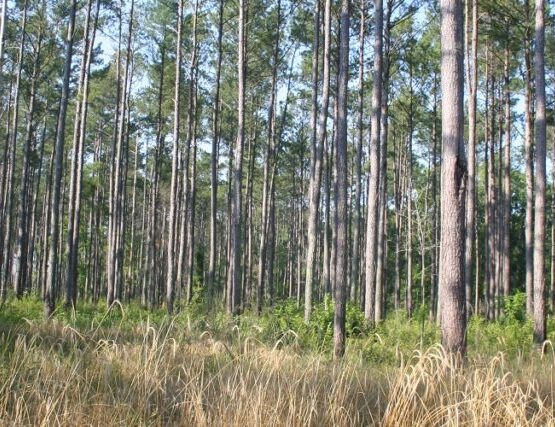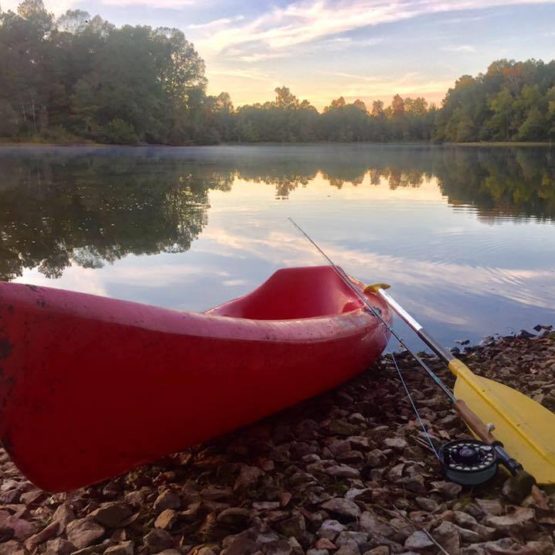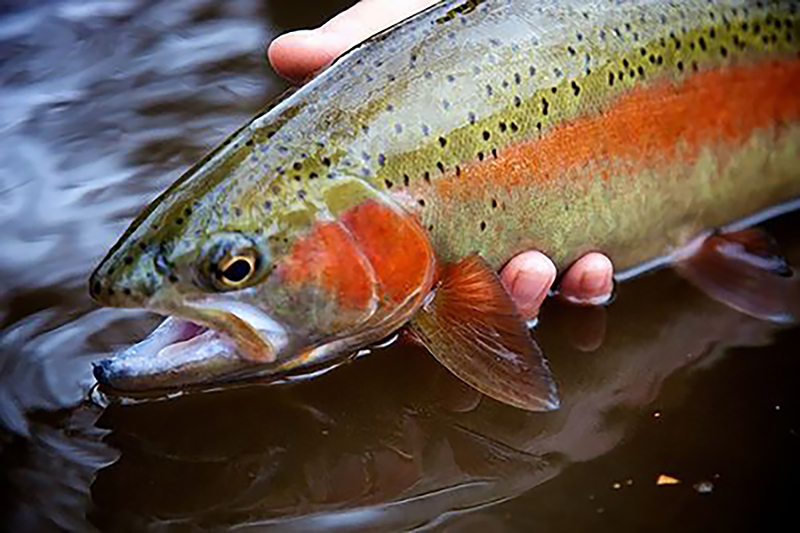
A Prospective Landowner’s Guide to Identifying Trout Water in the Southeast
by Taylor Knox, Responsible Broker, Merriweather Group, Atlanta, Georgia
Two Critical Factors
I’ve been fishing all my life and seriously concentrating on brokering recreational properties over the past 5 years. I’ve been a developer, builder, investor and broker dealing with land in some fashion for over 40 years. During that time, I’ve developed some easy, rule-of-thumb methods to quickly evaluate a property before wasting my clients time and money on unnecessary due diligence. I will share some of those methods here regarding trout water.
In evaluating a stream’s or pond’s potential to support trout year round there are two major factors I consider and that a novice/investor can easily investigate: Water Temperature and Aquatic Insect Life.
Water Temperature
You can purchase an inexpensive plastic armored water thermometer on line. Use it to take water temperature readings at various points along a stream or in a pond.
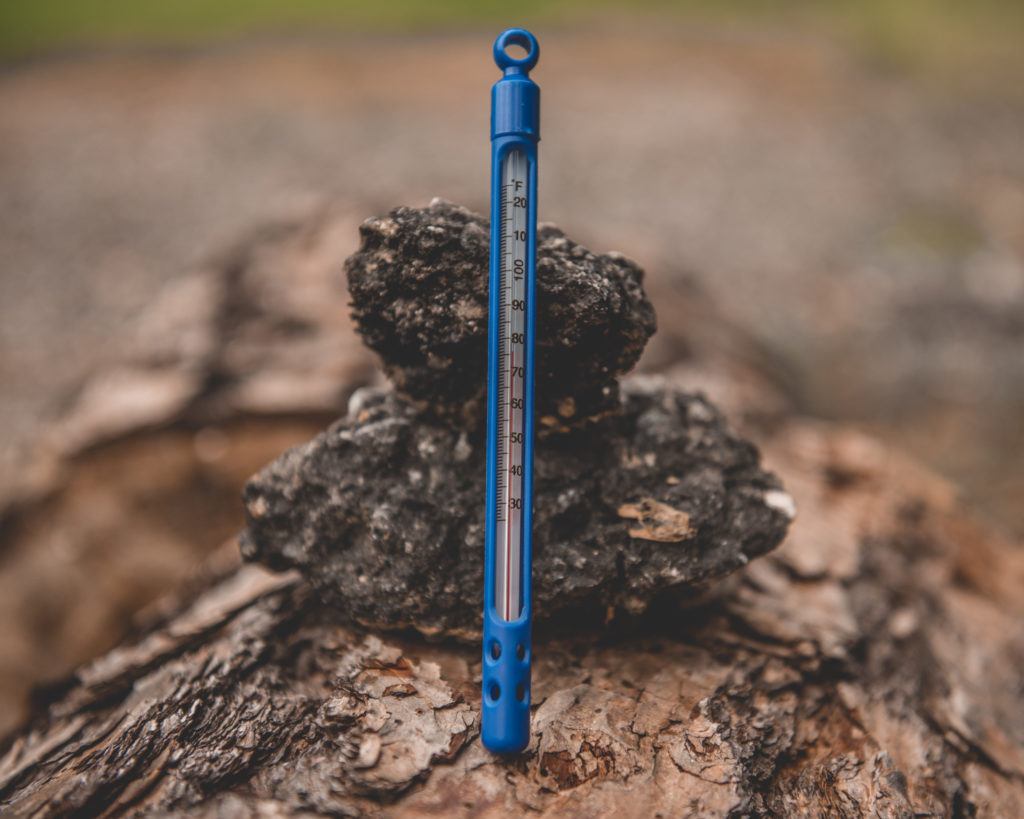
This photo: Armored thermometers such as the one shown here are readily available online.
The ideal temperature for rainbow trout is less than 65 degrees Fahrenheit, although they can survive temperatures of up to 75-77 degrees Fahrenheit, if not pressured. This is why many catch-and-release guided trout stream operations in the southeast prohibit or greatly restrict fishing during the summer. Ideally, you should take readings at the end of or during the summer, when water temperatures reach their highest seasonal levels.
Also, the presence of cool water refuges, such as pools with year round shade and stable but deeply undercut stream banks and cool water feeder branches and springs, should be sought out. The presence of areas that can and will drain warm water into a stream or pond is unfavorable. For instance, storm water drainage from asphalt parking lots or even open/cleared land can quickly warm up a stream or pond in a heavy rain. Not good.
Hemlock Wooly Adelgid (HWA)
One of the greatest threats to cool water streams in the eastern United States is the insidious Hemlock Wooly Adelgid or HWA. HWA attacks the majestic Hemlocks that provide deep year round shade on many southeastern streams in our mountainous areas. If you can stand against the trunk of a Hemlock and see daylight while looking straight up, HWA has probably attacked the tree. Also, turning over an intact branch and looking for many small white balls of 1/8th inch diameter or less – the telltale sign – will indicate the presence of HWA.
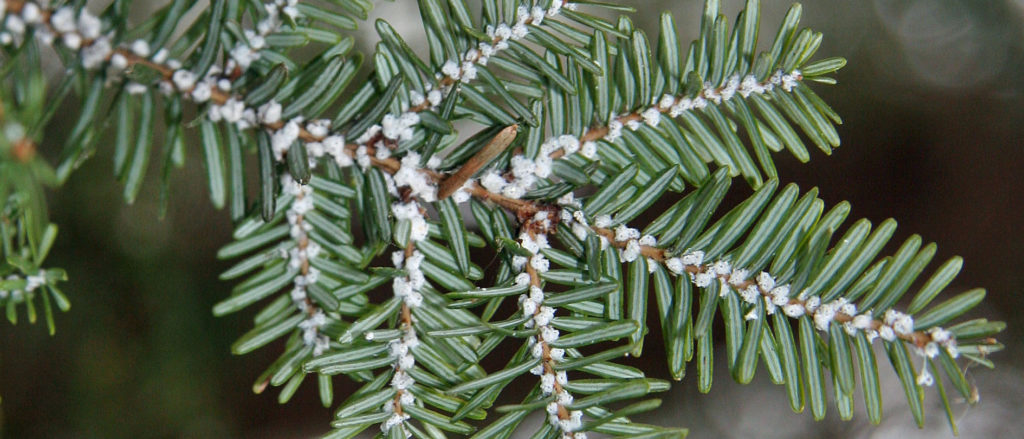
This photo: This tree is under attack from the Hemlock Woolly Adelgid (HWA).
If at least 30% of the canopy is intact, the tree can possibly be saved with proper care and treatment. There are competent professionals who can help assess and treat the problem as well as nonprofit groups to help guide the novice who wants to treat his/her own trees.
HWA is not a major concern on the many streams that have plenty of shade provided by other species, but knowing what to look for can help avoid present and future problems.
Aquatic Insect Life
I used to think I had to be an entomologist or professional trout fisherman to identify the insects that indicate a stream’s ability to support trout. But in the Southeast, it’s mostly a matter of knowing how to identify just a few insects like the May, Caddis and Stone fly nymphs that cling to the bottom of rocks in the stream.
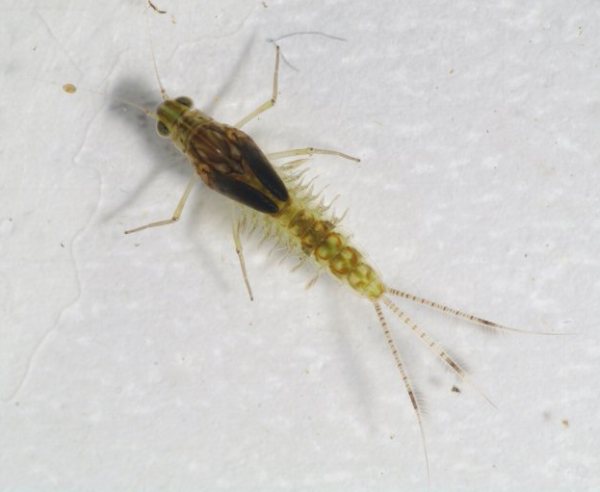
May Fly Nymph
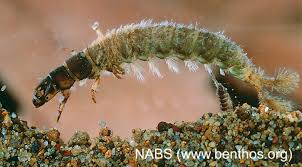
Caddis Fly Nymph
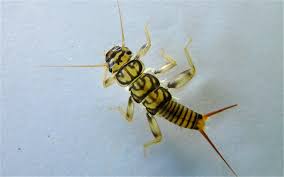
Stone Fly Nymph
Simply turning over rocks and looking for these insects is all that needs to be done. Even if you don’t know what you’re looking at when you turn the rock over and see the nymphs, taking a picture and matching it with stock photographs later can work. Another method is to buy artificial flies from a reputable fly shop and compare them to the insects in the stream.
Chances are if you see a lot of bugs clinging to the bottom of the rocks you turn over in a cool stream in the southeastern mountains, they will be one of the species mentioned. Because they are intolerant of pollution, a large population of these insects is an indication of a healthy stream that will support trout for some period during the year so long as the water temperatures don’t spike or rise above maximum temperature levels.
Of course, most land owners who want to catch a lot of fish each time they wet a line will stock and feed fish, but knowing that the conditions are suitable for doing so before going to contract or purchasing is all important.
Conclusion
If you like walking along, wading in, boating on or simply listening to and gazing at a beautiful stream or pond, buying and managing your own water-featured property will give you and generations to come the greatest level of enjoyment one can receive from owning land.
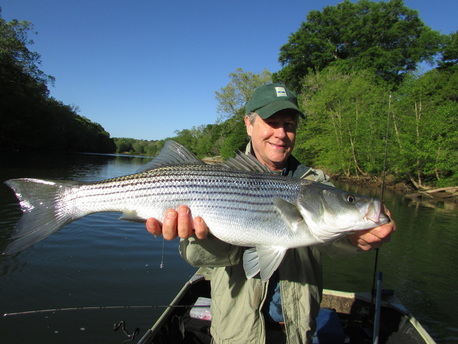
Taylor Knox is Principal and Responsible Broker of the Merriweather Group, a brokerage based in Atlanta. Taylor specializes in high-end recreational properties in prime Georgia locations.
Taylor’s 30+ year career as an owner of land acquisition and development firms enables him to formulate and implement a marketing plan and offer advice based upon hands on experience with most land issues: current market values, site conditions, wetlands, stream buffers, drainage, topography, infrastructure, timber, zoning and more.
A fifth generation Georgian, Taylor has an extensive knowledge of and love for the Southeast’s land, streams, environment, people, history, climate, transportation, recreational attractions, arts, medical facilities, schools, and natural resources.
A native Atlantan, Taylor attended E. Rivers School and The Lovett School for his elementary and high school education. He received his B.A. degree from University of Colorado, majoring in Political Science and Economics.
Taylor can be reached at [email protected] or on his cell: 678-571-8113. His website is www.merriweathergroup.com.

Taylor Knox is Principal and Responsible Broker of the Merriweather Group, a brokerage based in Atlanta. Taylor specializes in high-end recreational properties in prime Georgia locations.
Taylor’s 30+ year career as an owner of land acquisition and development firms enables him to formulate and implement a marketing plan and offer advice based upon hands on experience with most land issues: current market values, site conditions, wetlands, stream buffers, drainage, topography, infrastructure, timber, zoning and more.
A fifth generation Georgian, Taylor has an extensive knowledge of and love for the Southeast’s land, streams, environment, people, history, climate, transportation, recreational attractions, arts, medical facilities, schools, and natural resources.
A native Atlantan, Taylor attended E. Rivers School and The Lovett School for his elementary and high school education. He received his B.A. degree from University of Colorado, majoring in Political Science and Economics.
Taylor can be reached at [email protected] or on his cell: 678-571-8113. His website is www.merriweathergroup.com.
